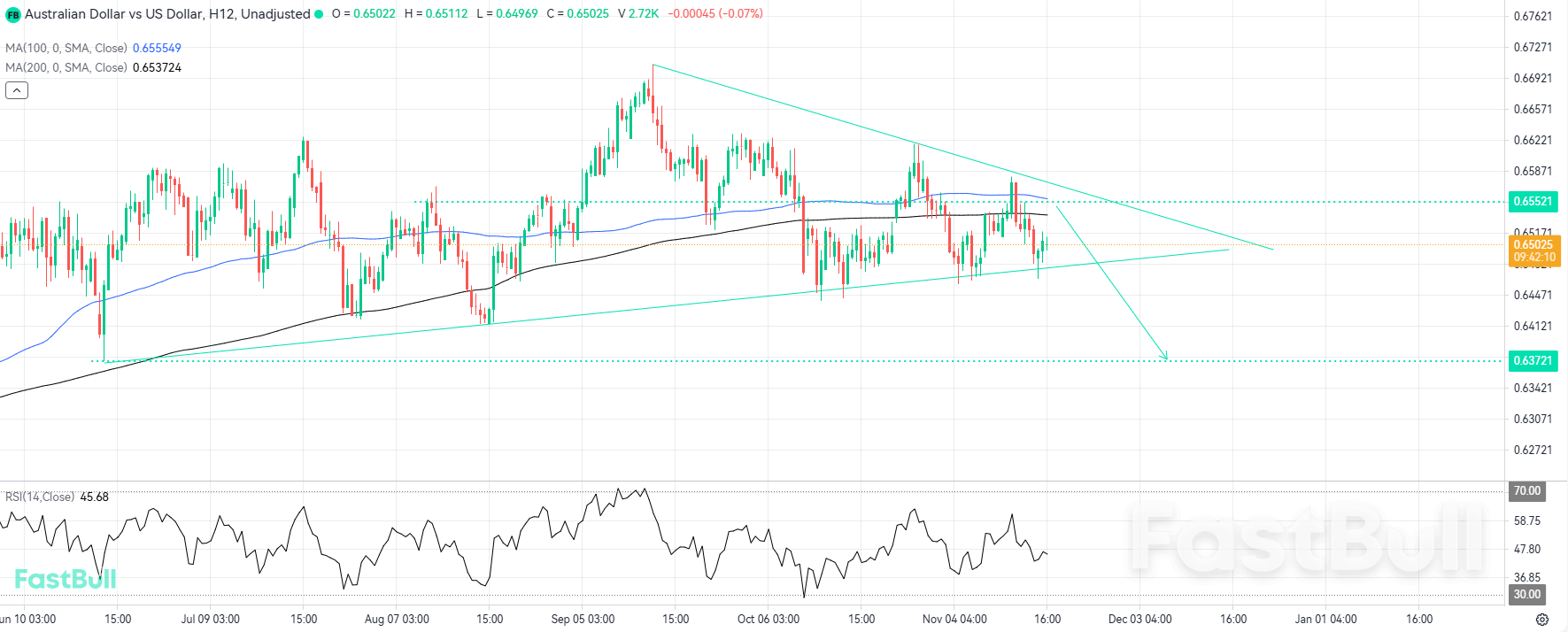The Reserve Bank of Australia (RBA) is set to release its latest meeting minutes, which are expected to reinforce the view that policymakers see no immediate urgency to cut the Official Cash Rate (OCR). This cautious stance is attributed to persistently robust domestic demand and firm underlying inflationary pressures. However, the central bank’s recent communications also contained a caveat: monetary easing could be considered if economic growth weakens significantly or if labor market conditions materially deteriorate.
Further attention will be focused on Australian economic data this week, specifically the third-quarter Wage Price Index, due for release on Wednesday. Market expectations are for a 0.8% quarter-over-quarter increase and a 3.4% year-over-year rise. An outcome that aligns with these forecasts would likely reinforce the RBA’s data-dependent, cautious posture, effectively limiting the outlook for any rapid rate cuts. According to the latest update on November 14th, the ASX 30-day interbank cash rate futures for December 2025 were trading at 96.41, reflecting a mere 6% probability of a rate cut to 3.35% (from the current 3.60%) at the upcoming RBA Board meeting.
The latest labor market data from the U.S. continues to signal deceleration. The ADP report indicated that U.S. private payrolls recorded a weekly average decline of 2,500 in the four weeks leading up to November 1st, a notable improvement from the steeper 11,250 average loss observed in the preceding period. Separately, August Factory Orders expanded by 1.4% month-over-month (MoM), which met consensus estimates and successfully reversed the 1.3% contraction recorded in July.
Federal Reserve Governor Christopher Waller adopted a distinctly dovish tone on Tuesday, characterizing the U.S. labor market as "weak" and "near stalling speed." He suggested that the current restrictive policy appears to be dampening economic activity and reiterated his view that a 25 basis point (bps) rate cut at the December 9-10 meeting would provide "additional assurance" for the stability of the labor market.
Adding to the complexity, President Donald Trump reversed previously imposed tariffs on over 200 consumer products, including coffee and orange juice. This decision was reportedly driven by an acknowledgment of the inflationary impact resulting from increased import costs. Despite the economic rationale, the immediate market reaction to this tariff news remained marginal.
Meanwhile, commentary from other Federal Reserve officials remains divergent. Vice Chair Philip Jefferson offered cautious, slightly dovish remarks on Monday, acknowledging growing risks to employment. Conversely, Kansas City Fed President Jeffery Schmid argued that the current policy stance is "moderately restrictive," which he deems appropriate to counter demand growth. St. Louis Fed President Alberto Musalem suggested that rates are now closer to neutral than restrictive, emphasizing the limited scope for easing without risking an overly accommodative stance.

Technical Analysis
The AUDUSD pair is entrenched in a defined downtrend, evidenced by the absence of consecutively higher highs, signaling that bearish pressure remains in control. The price action is clearly situated below both the 100-period and 200-period Moving Averages (MAs) on the 12-hour chart, currently residing at 0.6555 and 0.6537, respectively. This technical positioning adds significant weight to the prevailing bearish bias. Any move back toward the vicinity of these MAs is likely to encounter strong selling interest, creating a potential opportunity for short positions from that zone.
A nearby resistance cluster is defined by the 0.6552 level, which aligns closely with the 100-period MA. This confluence zone is anticipated to trigger a downward rejection. The Relative Strength Index (RSI) is currently at the 45 level, still within neutral territory. This suggests that the pair may experience a minor corrective bounce before the primary downward movement resumes. Price action is currently showing a slight upside reaction from support levels. However, should the price decisively break its downtrend by forming a new higher high and piercing the bearish trendline resistance, it would invalidate the immediate bearish scenario and could open the path for a broader upside movement.
Trading Recommendations
Trading direction: Sell
Entry price: 0.6552
Target price: 0.6372
Stop loss: 0.6590
Validity: Nov 28, 2025 15:00:00













